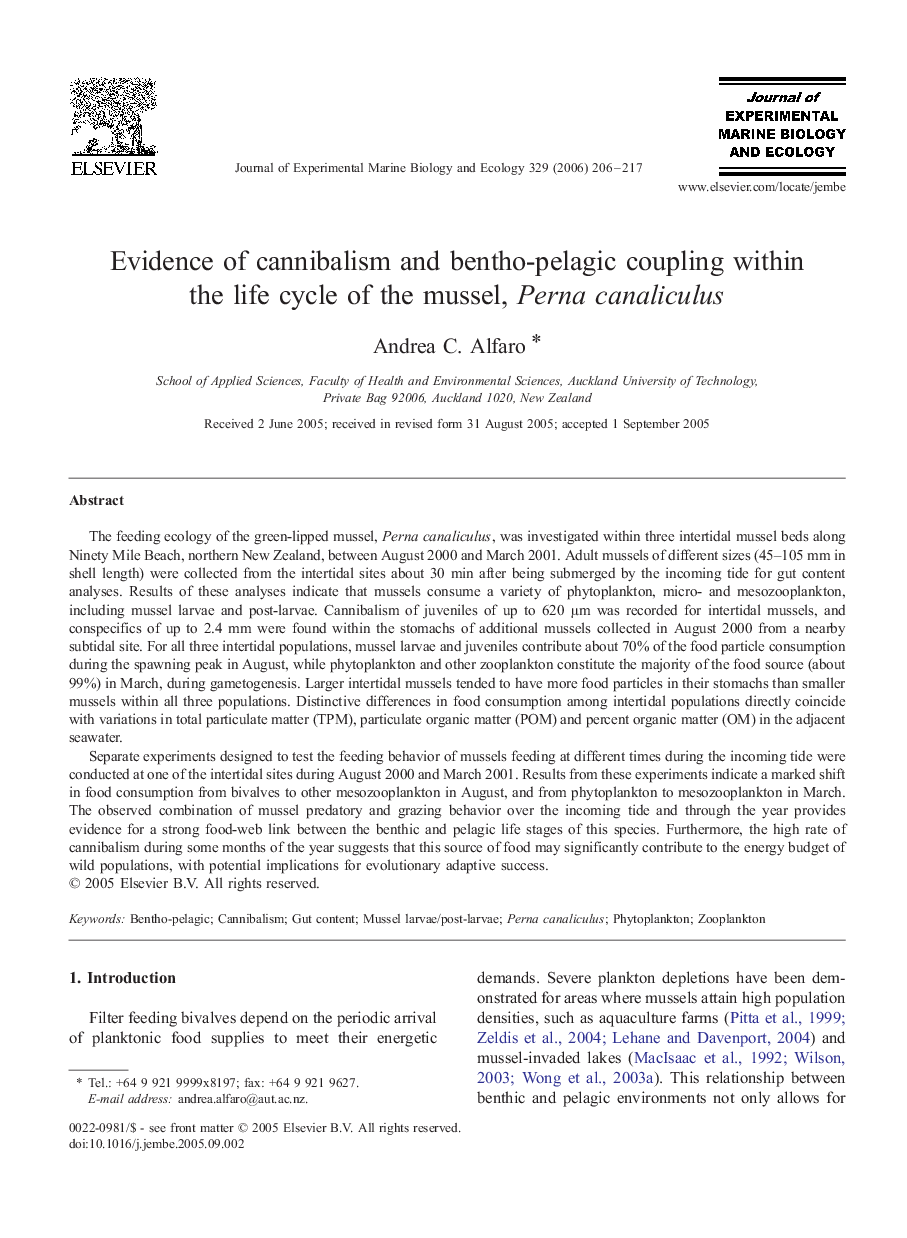| کد مقاله | کد نشریه | سال انتشار | مقاله انگلیسی | نسخه تمام متن |
|---|---|---|---|---|
| 4398243 | 1305933 | 2006 | 12 صفحه PDF | دانلود رایگان |

The feeding ecology of the green-lipped mussel, Perna canaliculus, was investigated within three intertidal mussel beds along Ninety Mile Beach, northern New Zealand, between August 2000 and March 2001. Adult mussels of different sizes (45–105 mm in shell length) were collected from the intertidal sites about 30 min after being submerged by the incoming tide for gut content analyses. Results of these analyses indicate that mussels consume a variety of phytoplankton, micro- and mesozooplankton, including mussel larvae and post-larvae. Cannibalism of juveniles of up to 620 μm was recorded for intertidal mussels, and conspecifics of up to 2.4 mm were found within the stomachs of additional mussels collected in August 2000 from a nearby subtidal site. For all three intertidal populations, mussel larvae and juveniles contribute about 70% of the food particle consumption during the spawning peak in August, while phytoplankton and other zooplankton constitute the majority of the food source (about 99%) in March, during gametogenesis. Larger intertidal mussels tended to have more food particles in their stomachs than smaller mussels within all three populations. Distinctive differences in food consumption among intertidal populations directly coincide with variations in total particulate matter (TPM), particulate organic matter (POM) and percent organic matter (OM) in the adjacent seawater.Separate experiments designed to test the feeding behavior of mussels feeding at different times during the incoming tide were conducted at one of the intertidal sites during August 2000 and March 2001. Results from these experiments indicate a marked shift in food consumption from bivalves to other mesozooplankton in August, and from phytoplankton to mesozooplankton in March. The observed combination of mussel predatory and grazing behavior over the incoming tide and through the year provides evidence for a strong food-web link between the benthic and pelagic life stages of this species. Furthermore, the high rate of cannibalism during some months of the year suggests that this source of food may significantly contribute to the energy budget of wild populations, with potential implications for evolutionary adaptive success.
Journal: Journal of Experimental Marine Biology and Ecology - Volume 329, Issue 2, 21 February 2006, Pages 206–217